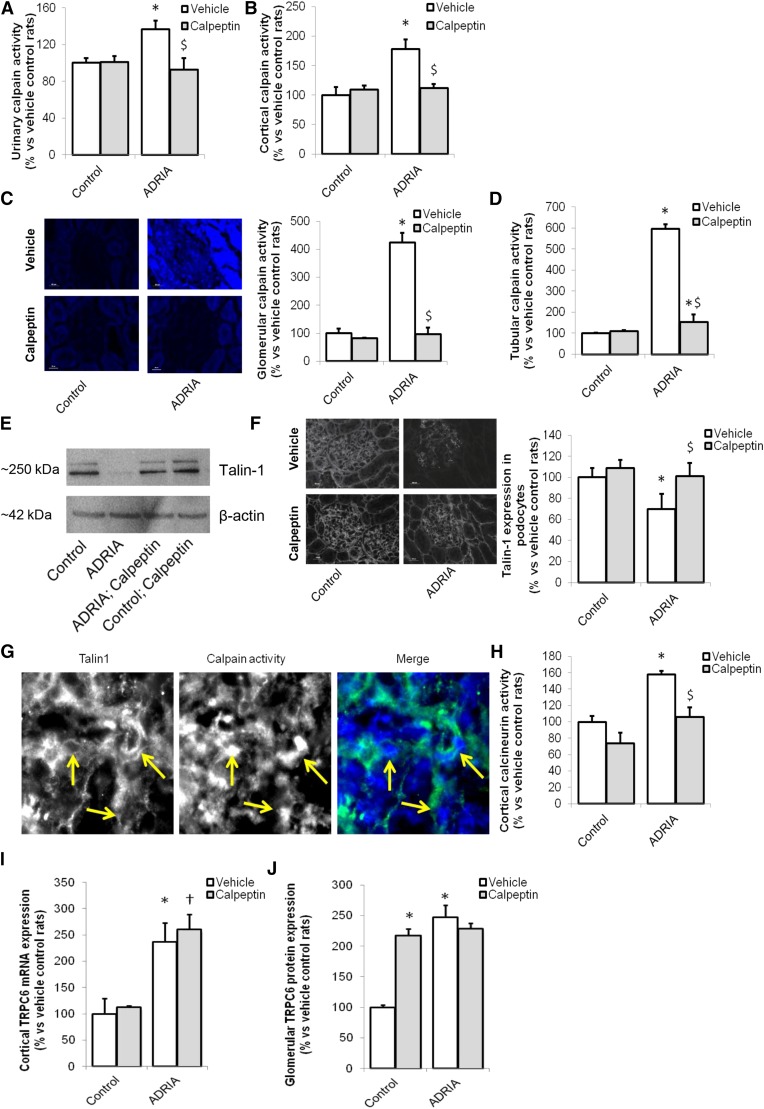Figure 4.
Inhibition of the enhanced calpain activity in an animal model for human FSGS improves renal outcome. Wistar rats were injected with vehicle (control) or adriamycin (ADRIA) to induce ADRIA nephropathy, a model for human FSGS. Subsequently, animals were treated with vehicle or calpeptin for 6 weeks, after which they were euthanized. (A) Urinary calpain activity was determined. (B) Protein was isolated from renal cortex, and a calpain activity assay was performed. Sections of the cortex were cut, an in situ zymography assay was performed, and (C) glomerular and (D) tubular calpain activity was determined. (E) Western blot analysis was performed to determine the expression of the calpain cleavage target Talin-1 in cortex extracts of snap-frozen kidneys (Talin-1–to–β-actin ratios: control, 0.20; ADRIA, 0.01; ADRIA + calpeptin, 0.25; control + calpeptin, 0.35). (F) Glomerular Talin-1 was costained with synaptopodin, and its expression was quantified. (G) Talin-1 was stained in combination with an in situ zymography for calpain activity. (H) Cortical calcineurin activity, as a downstream calpain target, was determined. (I) Cortical expression of Transient Receptor Potential channel C6 (TRPC6) mRNA was determined as well as (J) glomerular TRPC6 protein expression costained with synaptopodin measured by immunofluorescence. *P<0.05 compared with vehicle-treated control rats (n=8 rats per treatment group); †P<0.05 compared with calpeptin-treated vehicle rats (n=8 rats per treatment group); $P<0.05 compared with vehicle-treated ADRIA rats (n=8 rats per treatment group).

